Winter 2023
NIDCR News

NIDCR has issued 26 awards, totaling $14.1 million, through three bold new initiatives to drive scientific advances in dental, oral, and craniofacial research: Advancing Head and Neck Cancer Early Detection Research (AHEAD), TMD Collaborative for IMproving Patient-Centered Translational Research (TMD IMPACT), and Practice-Based Research and Multidisciplinary Experiences in Dental Schools (PRIMED). The initiatives aim to foster collaborative, multidisciplinary approaches to fill research- and training-related gaps in the fields of head and neck cancer, temporomandibular disorders, and practice-based research.
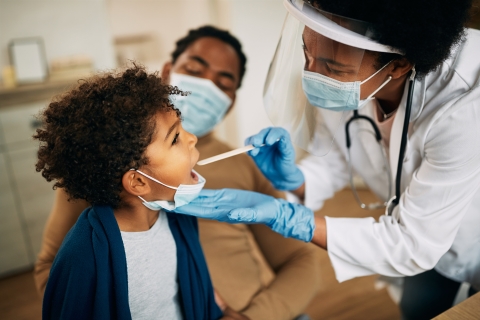
NIDCR Director Rena D’Souza, D.D.S., Ph.D., and Deputy Director Jennifer Webster-Cyriaque, D.D.S., Ph.D., co-authored an editorial in the Journal of the American Medical Association calling for more research to better understand the health outcomes of oral health screening and prevention by primary care clinicians. They noted that the existing lack of data should not deter clinicians from considering oral health during routine medical checkups.
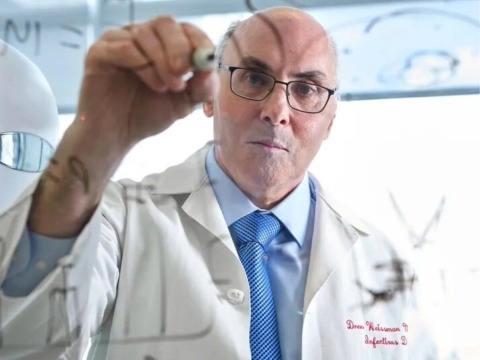
Former NIDCR grantee Drew Weissman, M.D., Ph.D., is a co-recipient of the 2023 Nobel Prize in Physiology or Medicine. Dr. Weissman and his longtime collaborator Katalin Karikó, Ph.D., both from the University of Pennsylvania, jointly received the award for their foundational research that enabled the development of mRNA vaccines against COVID-19. Dr. Weissman’s NIDCR-funded research to develop an oral mRNA vaccine for HIV contributed to the Nobel-winning work.

Dr. D’Souza joined National Institute of Diabetes and Digestive and Kidney Diseases (NIDDK) Director Griffin Rodgers, M.D., to offer oral health tips on Healthy Moments, a weekly radio broadcast sponsored by NIDDK. In a series of episodes, Drs. D’Souza and Rodgers discussed the importance of oral health across the lifespan, the connection between diabetes and oral health, and how a disturbed microbiome can leave us vulnerable to oral infection and bone loss around the teeth.

At the 2023 NIH Research Festival, NIDCR scientists Shaun Abrams, D.D.S., Ph.D., and Blake Warner, D.D.S., Ph.D., M.P.H., shared their research during the NIH Early Career Investigator Lectures. Dr. Abrams, an NIH Independent Research Scholar, presented his work on understanding how centrioles, tiny cylindrical organelles in cells, coordinate facial development. Dr. Warner, an Assistant Clinical Investigator, shared his work on using a myriad of biological data to identify effective treatments for salivary gland dysfunction in an autoimmune disorder called Sjögren’s disease.
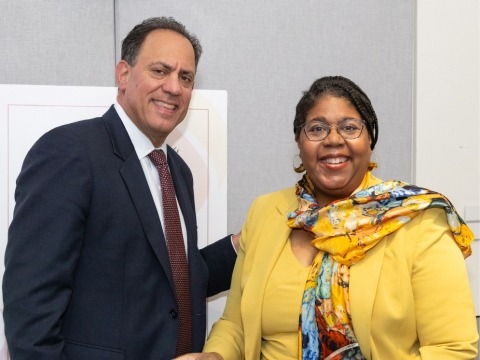
Dr. Webster-Cyriaque received the Excellence in Research Award from the Shils Entrepreneurial Fund. The award honors Dr. Webster-Cyriaque’s track record of outstanding research on oral health in the context of HIV infection and the microbiome and cancer-causing viruses in oral HIV. She was also recognized for her leadership roles in the Oral HIV/AIDS Research Alliance. The Shils Fund also honored NIDCR with the Special Recognition Award for its 75-year effort in leading research to improve oral health for all.

NIDCR Associate Scientific Director Kelly Ten Hagen, Ph.D., received the Rosalind Kornfeld Award for Lifetime Achievement in Glycobiology from the Society for Glycobiology. The award honors scientists who have made a significant impact on the field of glycobiology — the scientific study of sugar molecules called glycans and their role in biology. Dr. Ten Hagen is recognized for her contributions to the understanding of a group of glycans called mucin-type O-glycans and their importance to key cellular processes during development.
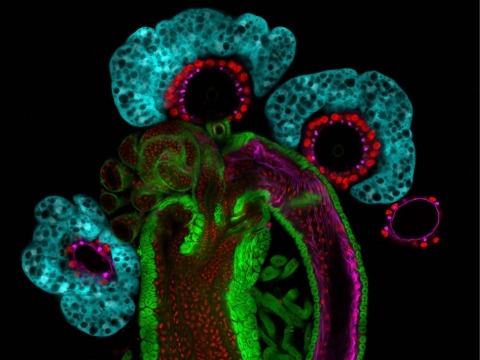
A scientific image taken by Dr. Ten Hagen and NIDCR staff scientist Liping Zhang, Ph.D., was selected as a winner of the 2023 Molecular Motifs bioart competition held by the American Society for Biochemistry and Molecular Biology. The image depicts the fluorescently stained reproductive system of a female fruit fly.
Training News

Embarking on a career in biomedicine is more than conducting experiments and writing NIH grant applications. It requires skills and knowledge in finding the right mentor, practicing open communication, networking, identifying opportunities for career progression, and more. In a two-part miniseries for the NIH All About Grants podcast, two NIH staff members share advice for gaining these essential skills as an early career investigator.

Following the public’s input, NIH has recommended changes to the peer review process of Ruth L. Kirschstein National Research Service Award fellowship applications. The proposed review criteria and application form changes will help reviewers better evaluate candidates without undue sponsor or institution influence and target candidates' specific training needs. An NIH-wide committee will oversee the implementation of the proposed changes.

New research found that only 9% of applicants made the first cut to be seriously considered for postdoctoral fellow (postdoc) positions in the sciences. White applicants, as well as Black, Latina, and Native American (BLNA) women, were the most likely to reach that stage. BLNA men and Asian applicants were least likely. However, white applicants were most likely to receive a final job offer. The findings could inform long-standing efforts to diversify postdoc hiring.
- Now open until filled:
- NIDCR Director’s Postdoctoral Fellowship to Enhance Diversity in Dental, Oral, & Craniofacial Research
- NIDCR Director’s Postbaccalaureate Fellowship to Enhance Diversity in Dental, Oral, & Craniofacial Research
- Applications open Wednesday, November 15, 2023–Friday, February 16, 2024:
- NIDCR Summer Internship Program (for college students or recent college graduates)
- NIDCR High School Summer Internship Program
- New applications due February 12, 2024: NIH Research Career Development Awards (K series: training opportunities at the undergraduate, graduate, and postdoctoral levels)
Science Advances

A recent NIDCR-supported clinical trial offers new data on the timing of surgery for infants with isolated cleft palate, a birth condition that causes a split in the roof of the mouth. The researchers found that children who were healthy enough to have their cleft palates surgically repaired at six months had better speech outcomes at age five than those who had surgery at one year. Earlier surgery also benefited hearing sensitivity and middle-ear function.

As a tribute to NIDCR’s 75th anniversary, a new article on the institute’s website traces six decades of NIDCR-supported research on pain and temporomandibular disorders (TMDs), a set of conditions that can cause pain and dysfunction in the jaw joint and muscles. NIDCR-supported scientists have made significant strides to define the neural underpinnings of orofacial pain and to tease apart the biological, psychological, and environmental factors that underlie TMDs. This foundational work is informing new efforts, via the TMD IMPACT initiative, to establish a coordinated, interdisciplinary, patient-centered scientific approach to improve prevention, diagnosis, and treatment of TMDs.
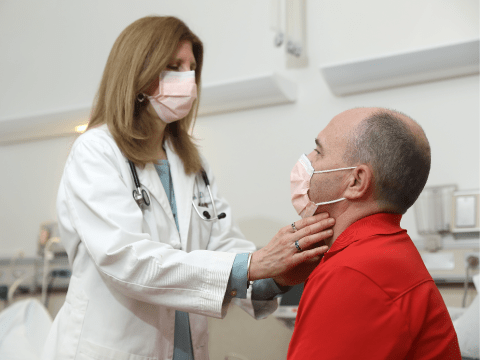
An investigational drug, encaleret, showed promise for treating autosomal dominant hypocalcemia type 1 (ADH1) in an NIDCR-led clinical trial. ADH1 is a rare genetic disorder marked by an imbalance of calcium in the body, causing symptoms such as muscle cramps and life-threatening seizures. The treatment restored blood calcium and the calcium-regulating parathyroid hormone to normal levels.
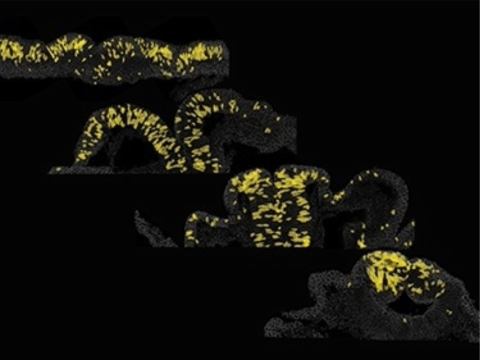
A team led by NIDCR investigator Laura Kerosuo, Ph.D., uncovered clues about a group of stem cells that are key to the development of vertebrates. These cells, called neural crest cells, appear early in the embryo and eventually give rise to the facial skeleton and parts of the teeth and salivary glands. Genomic analyses of single cells demonstrated how neural crest cells hold on to their ability to turn into different cell types longer than any other stem cells in the embryo — a question that has long puzzled scientists. The results could help shed light on how neural crest development goes awry to cause birth anomalies.
Grantee News
NIH/HHS News

A growing body of evidence suggests that cephalopods, including octopuses, squid, and cuttlefish, may have the ability to perceive pain and exhibit adaptive learning. To ensure humane care and use of cephalopods in NIH research, the agency is seeking input from the public on proposed guidance for cephalopod welfare for institutions with approved Animal Welfare Assurances. Send your response by Friday, December 22, 2023.

To improve focus on scientific merit and reduce reputational bias, NIH is revising its grant review process. The changes include simplifying the process to assess the scientific merit of research grant applications and mitigating elements that can potentially introduce bias into review. The simplified review framework will be implemented for grant applications received on or after January 25, 2025.

NIH formally designated people with disabilities as a population with health disparities to ensure their representation in NIH research. Designated populations experience significant disparities in rates of illness, morbidity, mortality, and survival. The designation was coupled with the release of a notice of funding opportunity inviting applications to address the combined effects of disability, race and ethnicity, and socioeconomic status on health and access to care.

A group of international scientists mapped the genetic, cellular, and structural makeup of the human brain and the nonhuman primate brain. This understanding of brain structure allows for deeper knowledge of the cellular basis of brain function and dysfunction, helping pave the way for a new generation of treatments for people with disorders of the brain. The research was funded by NIH’s Brain Research Through Advancing Innovative Neurotechnologies® Initiative.

The NIH library has developed a new tool to index preprints for key research articles before they are formally published in journals. This database indexes close to 2 million preprints from five international repositories. Content is available from 1991 forward and is updated daily.
